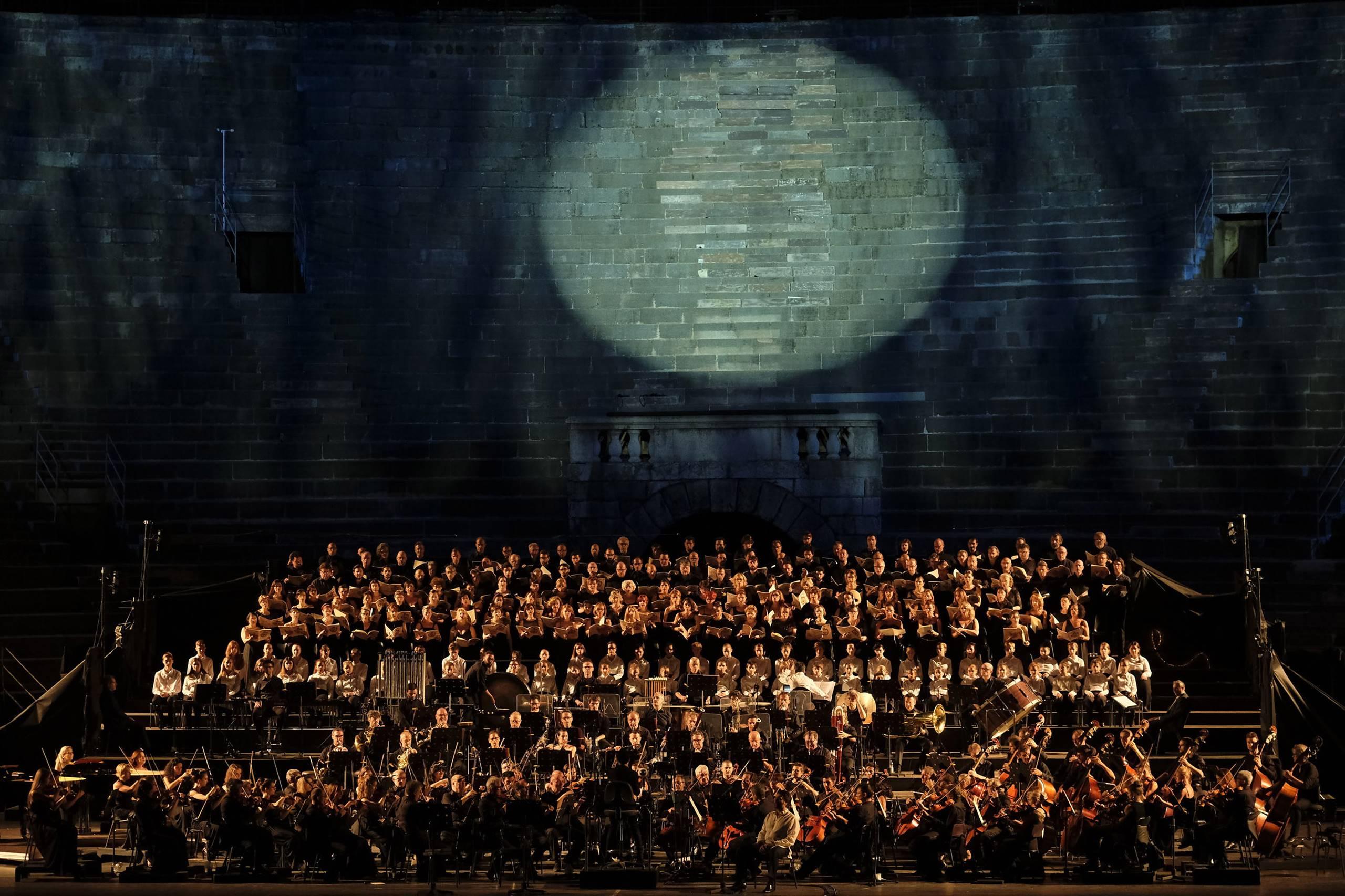Carmina Burana
 Musicali
Musicali
Descrizione
Unica data straordinaria per il monumentale concerto sinfonico e corale dei Carmina Burana.
Carmina Burana è una cantata scenica composta da Carl Orff tra il 1935 e il 1936, ed è basata su 24 poemi tra quelli trovati nei testi poetici medievali omonimi, opera di goliardi e clerici vagantes. Il titolo completo è "Carmina burana: Cantiones profanae cantoribus et choris, comitantibus instrumentis atque imaginibus magicis".
Questa composizione fu rappresentata la prima volta l'8 giugno 1937 a Francoforte sul Meno, mentre la prima italiana si tenne il 10 ottobre 1942 al Teatro alla Scala di Milano. Dopo la prima rappresentazione a Francoforte, Orff ottenne un grandissimo successo, e la cantata fu eseguita in altre città tedesche e, nonostante fosse molto ostacolata dal regime nazista per il tono erotico di alcuni canti, divenne l'opera musicale più conosciuta tra quelle composte durante il periodo nazista.
L'opera non segue una trama precisa ma parte della struttura della composizione si basa sul concetto del giro della Ruota della fortuna: infatti sulla prima pagina della raccolta dei poemi è rappresentata la ruota con quattro frasi posizionate intorno quest'ultimo.
Il brano "O Fortuna" apre e chiude il ciclo ed è forse il brano più celebre della composizione: viene sovente proposto in situazioni apocalittiche o potentemente drammatiche.
The only extraordinary date for the monumental symphonic and choral concert of the Carmina Burana.
Carmina Burana is a scenic cantata composed by Carl Orff between 1935 and 1936, and is based on 24 poems among those found in the medieval poetic texts of the same name. The full title is "Carmina burana: Cantiones profanae cantoribus et choris, comitantibus instrumentis atque imaginibus magicis".
This composition was performed for the first time on June 8th, 1937 in Frankfurt am Main, while the Italian premiere was held on October 10th, 1942 at the Teatro alla Scala in Milan. After the first performance in Frankfurt, Orff achieved great success, and the cantata was performed in other German cities and, despite being very hampered by the Nazi regime due to the erotic tone of some songs, it became the best known musical work among those composed during the Nazi period.
The work does not follow a precise plot but part of the structure of the composition is based on the concept of the spin of the Wheel of Fortune: in fact on the first page of the collection of poems the wheel with four sentences positioned around it is represented.
The piece "O Fortuna" opens and closes the cycle and is perhaps the most famous piece of the composition: it is often proposed in apocalyptic or powerfully dramatic situations.

